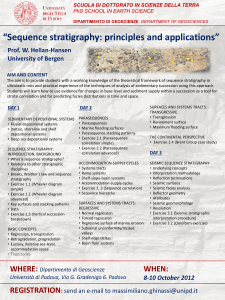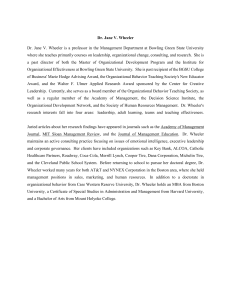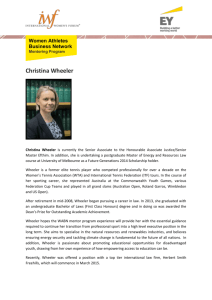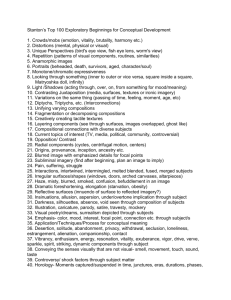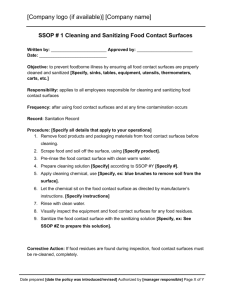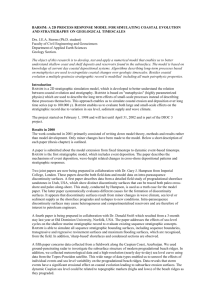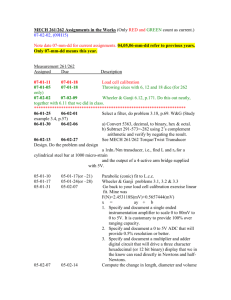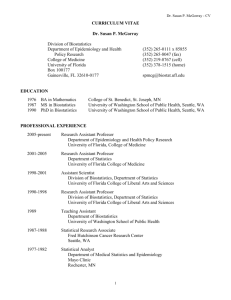Geol342 - Sedimentation and Stratigraphy
advertisement
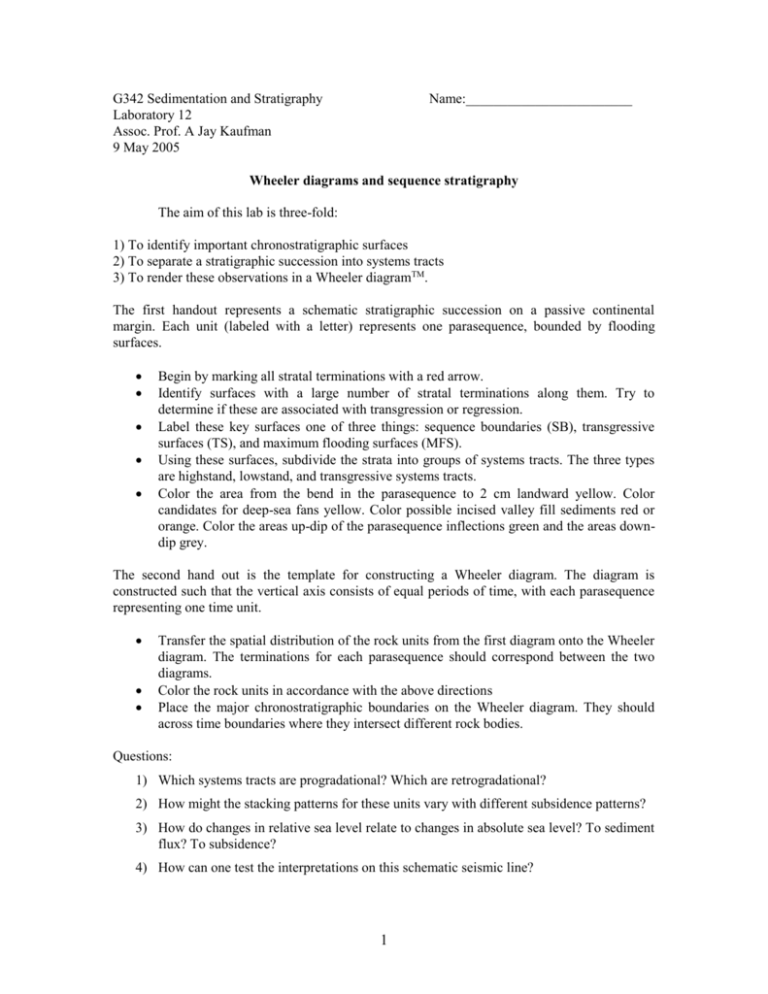
G342 Sedimentation and Stratigraphy Laboratory 12 Assoc. Prof. A Jay Kaufman 9 May 2005 Name:________________________ Wheeler diagrams and sequence stratigraphy The aim of this lab is three-fold: 1) To identify important chronostratigraphic surfaces 2) To separate a stratigraphic succession into systems tracts 3) To render these observations in a Wheeler diagramTM. The first handout represents a schematic stratigraphic succession on a passive continental margin. Each unit (labeled with a letter) represents one parasequence, bounded by flooding surfaces. Begin by marking all stratal terminations with a red arrow. Identify surfaces with a large number of stratal terminations along them. Try to determine if these are associated with transgression or regression. Label these key surfaces one of three things: sequence boundaries (SB), transgressive surfaces (TS), and maximum flooding surfaces (MFS). Using these surfaces, subdivide the strata into groups of systems tracts. The three types are highstand, lowstand, and transgressive systems tracts. Color the area from the bend in the parasequence to 2 cm landward yellow. Color candidates for deep-sea fans yellow. Color possible incised valley fill sediments red or orange. Color the areas up-dip of the parasequence inflections green and the areas downdip grey. The second hand out is the template for constructing a Wheeler diagram. The diagram is constructed such that the vertical axis consists of equal periods of time, with each parasequence representing one time unit. Transfer the spatial distribution of the rock units from the first diagram onto the Wheeler diagram. The terminations for each parasequence should correspond between the two diagrams. Color the rock units in accordance with the above directions Place the major chronostratigraphic boundaries on the Wheeler diagram. They should across time boundaries where they intersect different rock bodies. Questions: 1) Which systems tracts are progradational? Which are retrogradational? 2) How might the stacking patterns for these units vary with different subsidence patterns? 3) How do changes in relative sea level relate to changes in absolute sea level? To sediment flux? To subsidence? 4) How can one test the interpretations on this schematic seismic line? 1
